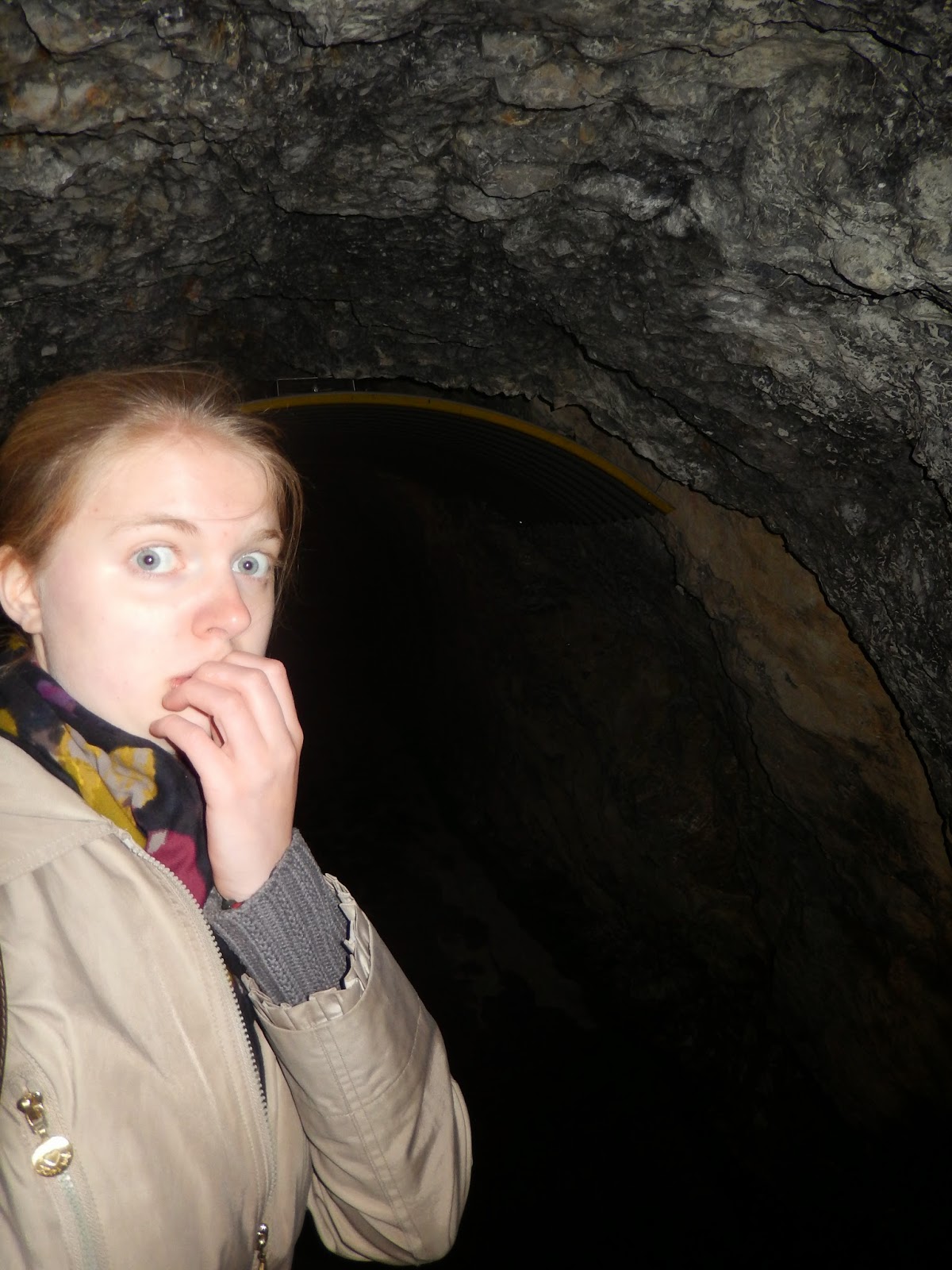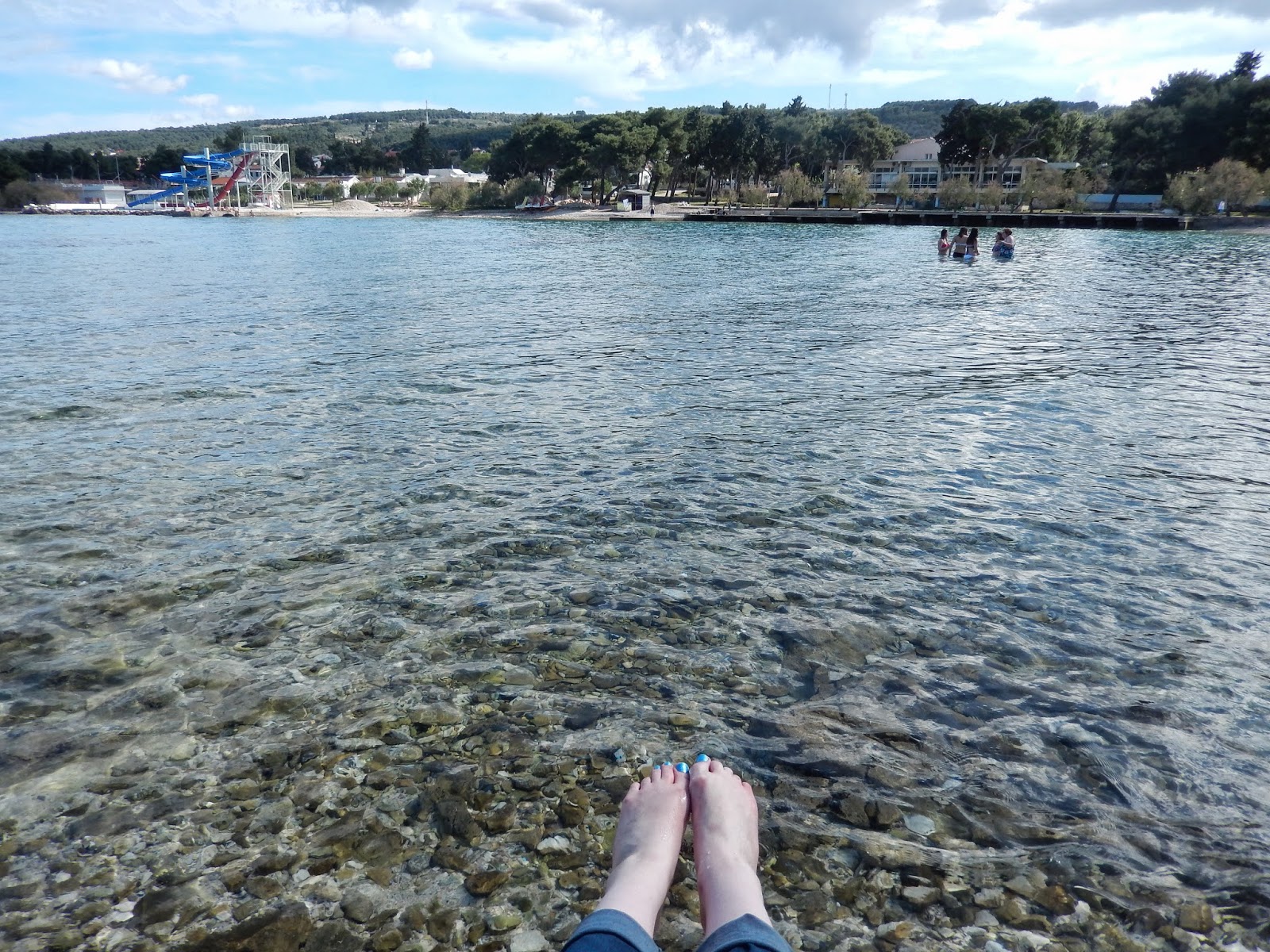After a bit of a delay coming from the airport, I arrived at Hotel Chopin around dinner time and met the twins for an evening stroll around the city, leaving New Town (Nove Mesto) for historic Old Town (Stare Mesto), one of the only Eastern European metropoles left intact after World War II. (Apparently Hitler had big plans for Prague, his favorite city, as a monument to the extinct Jewish race; fortunately, these plans did not achieve fruition but still kept the city beautiful amid the wreckage of Eastern Europe.) The Easter markets were in full swing, and we found a wide boulevard with restaurants and clubs and shops and hotels lined up and lit up in the dusk; it felt a little bit like Times Square. People were milling around, eating rolled dough coated in sugar (called trdelnik), drinking Czech liquor, playing live music, and selling honey and clocks and decorated Easter eggs and other traditional Czech items. It was very lively and bright. We wound our way to the Staromêstské námêstí, a the oldest square in historic Prague, which was hemmed in by the great Church of Our Lady Before Tyn, the world's oldest astronomical clock and tower, the Prague National Gallery, and overflowing restaurants and shops. It was certainly the tourist center of Prague, but for good reason; especially as it filled with Easter market shoppers and vendors, it was a very cheerful, Czech place to chill.
Staromêstské námêstí with the astronomical clock (the tower on the left) and the cathedral
A Czech tradition
Pork dumplings and sauerkraut
The central square in the daylight
The clock tower and the cathedral
The Rudolfinum, Prague's second most important concert hall. (They say Hitler wanted the statue of Mendelssohn removed from the roof because he was Jewish, but the workers didn't know which one was Mendelssohn. They guessed incorrectly and ended up removing Wagner, Hitler's favorite composer.)
Antonin!
Prague has a rich history of music indeed; it has long been a major stop for classical and modern music giants and boasts some of the best concert halls in Europe, including the Rudolfinum. The Czech Republic's own Antonin Dvorák was of course a Prague favorite, and we enjoyed some of his music at our concert. And the City of Prague Philharmonic is world-renowned for producing the music you'll recognize in soundtracks from The Lord of the Rings, Battlestar Galactica, Citizen Kane, The Duchess, and more. But in addition to a strong and enduring music scene, the city pays homage to Franz Kafka, who was born in Prague and lived there for much of his life.
Tortured genius
On Easter Monday we crossed the Vtlava once again to explore Prague Castle, a stunning complex of government and historical buildings on a high outcrop above the river. From the top of the hill, one looks out across the orange and copper green rooftops of Prague and can fully appreciate just how beautiful the Czech capital has remained. Within the Castle area stood St. Vitus Cathedral, an enormous Gothic church with spectacular stained glass windows. As we drifted through the various buildings - including rows of tiny homes that used to house the Castle's servant staff (one of which was rented by Kafka for a time) - we learned the history of the area, which had first been inhabited in prehistoric times and was the seat of the local government for over a thousand years.
St. Vitus Cathedral, entirely enclosed within the Castle walls
The beautiful stained glass
The rooftops of Prague
Looming above the Easter markets was the world's oldest astronomical clock
Enter, out of the corner of my eye, the culprit: Random Whip-Bearing Czech Man With Heavy Accent. "Ladies! Happy Special Day!"
At this moment, our pride was doomed to a slow, painful death by forced nervous laughter as we fled the scene with the best Roman-educated speedwalking we could muster. Once we were a safe distance away, we burst into real laughter over another cultural barrier smashed to a pulp by a skinny willow whip.
We spent more time in the Castle district afterwards and visited the John Lennon Wall, brightly colored with thousands of painted messages honoring the legend and promoting his campaign for peace. We added our own stamp with a nod, of course, to our adoptive home to the south. For dinner we paid more tribute to Prague's musical history by eating at Mozart's favorite Prague pub, still in business after several hundred years, before enjoying a nighttime cruise on the Vltava.
John Lennon Wall
SPQR! (Just above the red paint on the plate)
Prague at night
























































